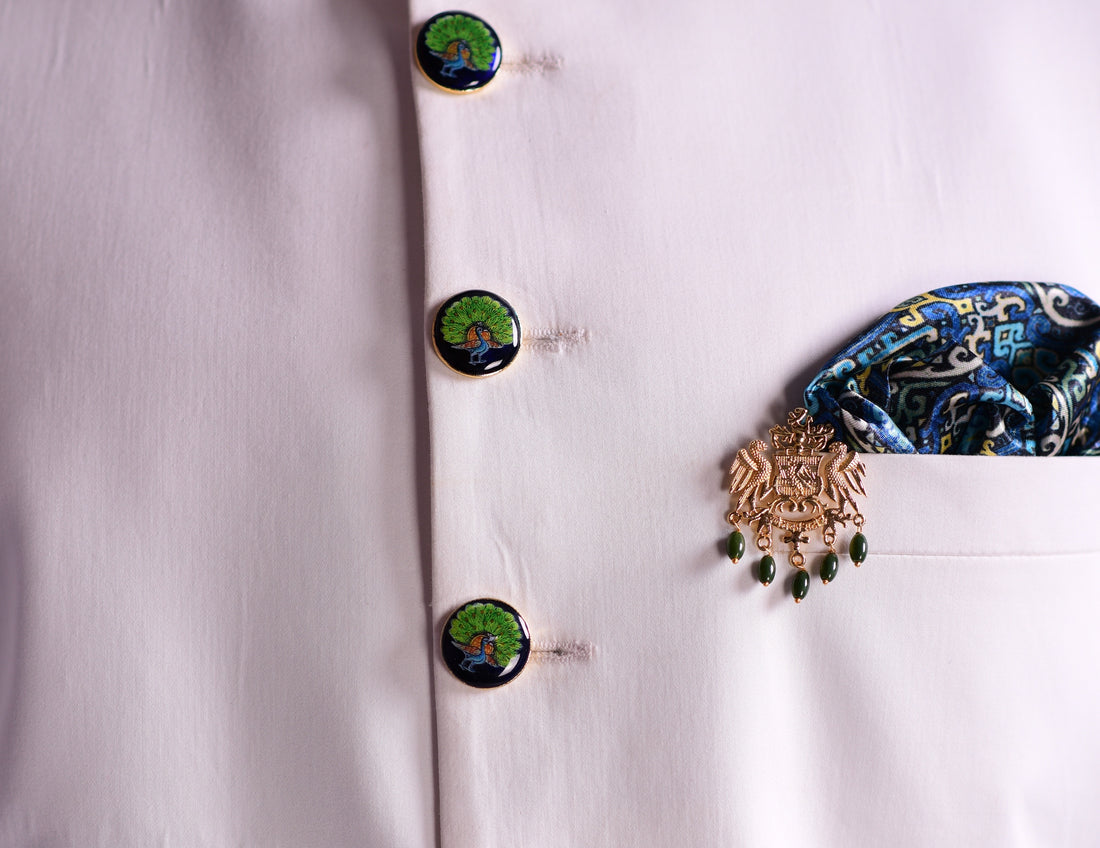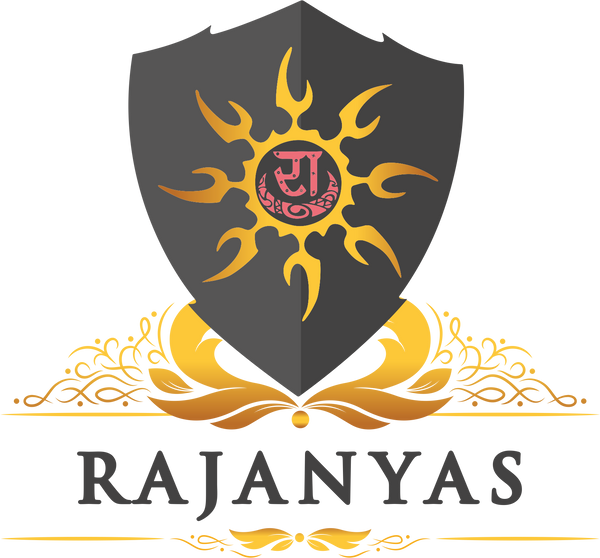
Bejeweled Buttons
What is a button?

It would be too simple to answer: a small instrument, an accessory that men and women use to fasten two parts of a garment in knitwear or leather together. In actual fact, from the time of its invention, the button has always been much more than this. It is a cultural expression, a subliminal message that can convey power, wealth and nobility in a man or woman or more recently, a bold means of communication and company image, an element that makes a specific pair of jeans or a suit stand out, or the symbol of a designer and emphasized in collections.
The button is an accessory but it is also the accessory: it is the element that makes the difference and enhances a men’s or women’s attire. Elegant and classical Jewelled buttons mean style; the perfectly shaped and enamelled Meenakari button is a design feature; new buttons mean fashion and get a great deal of media attention in spring/summer and autumn/winter collections.
Buttons are material, colour and shape, and they allow the wearer’s personality to stand out, enhancing a normal Jacket, a Jodhpuri, or an Achkan.
There is no need to be in the fashion industry to know that even a cheap garment can become unique and prestigious if common buttons are replaced by more valuable ones with a well defined design, that jeans are easily recognised by their buttons and that a Jacket with special buttons can become a showcase garment.
What is the first thing one look at to understand the social and cultural level of a person, before their shoes and bag? The buttons of course! At least this is what happens throughout the whole designer fashion and clothing industries.
Design is now a part of every expression of quality of living and no item is exempt from careful scrutiny of the quality of its details and accessories.
The following are just a few of the construction and decoration techniques that have been used in button-making:
- Meenakari
- Thewa
- Stonework
- Arita porcelain
- Cloisonné
- Daguerreotype
- Embroidery
- Filigree
History of Button
Buttons and button-like objects used as ornaments or seals rather than fasteners have been discovered in the Indus Valley Civilization during its Kot Yaman phase (c. 2800–2600 BC) as well as Bronze Age sites in China (c. 2000–1500 BC), and Ancient Rome.
Buttons made from seashell were used in the Indus Valley Civilization for ornamental purposes by 2000 BC. Some buttons were carved into geometric shapes and had holes pierced into them so that they could be attached to clothing with thread.
India has been ruled by different empires over the past many years. All these empires have left an indelible mark on the Indian jewellery. The Mughals gave their distinctive style of using precious stones and intricate carvings, the Rajputs had their enamelled jewellery.
Meenakari :

Meenakari is a Persian art of colouring the surface of metals by fusing brilliant colours. It is a type of ancient Cloisonne technique. The art was brought to India by Persian enamellists around early 17th century during the Mughal era.
Introduced in Rajasthan by Raja Mansingh of Amer, this Persian craft was originally used to create designs on the back of traditional polki jewellery. One of the most complex crafts, the process of Meenakari remains the same as it was 500 years ago! Even today, at Rajanyas, a Meenakari artefact goes through the same assembly line of craftsmen as it used to go through hundreds of years ago.
Thewa :
Thewa is a traditional art of fusing 23K Gold with multicoloured glass. The glass is treated by a special process to have glittering effects, which in turn highlights the intricate gold work. The whole Thewa piece is hand crafted over a period of one month by skilled artisans. Thewa, an art that pulsates with life, caught seemingly in movement, in motifs used on jewellery, which shows the culture, heritage and tales of romance and valour of Rajasthan with nature and happiness depicting the art of the fine craftsmanship. The process of making thewa work is detailed; time consuming and intricate, taking up to a month to complete each piece.
The warrior aristocracy of Rajputs made lavish use of jewellery and bejewelled gems encrusted weapons, jewellery and buttons as symbolic affirmations of the sanctity of their caste.
